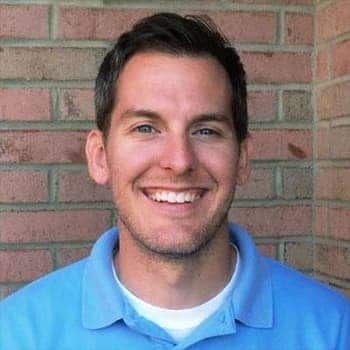Trichotillomania is a problematic condition that often requires a combination of therapy and medication management to end the behavior of compulsive hair pulling.
In severe cases,trichotillomania, also known as hair pulling disorder, may require professional treatment. Fortunately, many professional therapies and medication treatments help to reduce the influence of trichotillomania. Anyone seekingtreatment for trichotillomaniashould work with an experienced professional to build an effective care plan.
Therapy for Trichotillomania
Psychotherapy andbehavioral therapyare effective options for trichotillomania treatment. Depending on the type of therapy and the treatment approach of the professional, therapy can uncover the motivations for hair pulling and identify ways to end the behavior.
Therapy options helpful for trichotillomania include:
- Cognitive Behavioral Therapy (CBT):CBT for trichotillomaniaworks to investigate the connection between thoughts, feelings and behaviors contributing to hair pulling and finding ways to modify them.Cognitive behavioral therapyencourages the client to challenge their distorted beliefs to reduce symptoms.
- Habit Reversal Training:Habit reversal trainingfor trichotillomaniateaches the person how to recognize the thoughts and feelings that occur before hair pulling so they can substitute it for other behaviors. For example, the therapist may prompt the person to clench their fists or knit when emotions are high to avoid the urge.
- Acceptance and Commitment Therapy (ACT):Acceptance and commitment therapyfor trichotillomaniahelps people break the bond between the craving to pull hair and the act of pulling. The goal is for the person to accept their urges while committing to eliminating hair pulling behaviors.
Not every treatment will be appropriate for every person with trichotillomania. However, with experimentation and patience, trichotillomania therapy can reduce symptoms.
Medication
Many psychiatrists offermedications to treatment trichotillomania, but it is valuable to recognize that there are no medications approved exclusively for trichotillomania symptoms. Because of this, practitioners and researchers areexploring the effectivenessof different medication options for trichotillomania, like:
- Selective Serotonin Reuptake Inhibitors (SSRIs):SSRIsincrease the amount of serotonin in the brain. Though some studies show these drugs are helpful, others are less definitive. Either way, SSRIs can treat symptoms of anxiety and depression that can co-occur with trichotillomania.
- Tricyclic Antidepressants: Tricyclics are an older variation of antidepressants that still find many uses today. Fortrichotillomania, tricyclic antidepressantslike clomipramine can help reduce symptoms, but the numerous side effects from the drug may be problematic for some individuals.
- Opioid Antagonists: There is an interest in the use of opioid blockers to treat several mental health and substance use disorders, including trichotillomania. A drug likenaltrexone, which stops opioids from binding to receptors in the brain, may be useful for addressing trichotillomania symptoms.
While medications are sometimes used on their own for trichotillomania treatment, it seems the best success comes when a person uses medications and therapy simultaneously. This combined treatment plan can help improve symptoms more quickly and increase the likelihood of long-term improvements.
Alternative Treatments for Trichotillomania
With medications being inconclusive treatments for trichotillomania, many people seektrichotillomania alternative treatmentsfor symptom relief. While natural remedies for trichotillomania are being tested, some possibilities include:
- N-acetylcysteine:Sometimes called NAC,N-acetylcysteine for trichotillomaniais an amino acid that helps the brain regulate chemicals related to mood
- Aromatherapy:Aromatherapy for trichotillomaniainvolves smelling pleasant, relaxing or calming scents — especially when symptoms are high — to reduce the urge to pull.
- Essential Oils:Some people report the benefits of usingessential oils for trichotillomania. Applying castor oil, lavender oil, rosemary oil and others to the area one pulls from could help reduce the behaviors.
Trichotillomania Support Groups
For a person looking to supplement professional treatment, trichotillomania support groups are available locally and online to provide support, understanding and comfort to those with the disorder. Support group members can offer novel treatment strategies to improve one’s state.
Online trichotillomania support groups include:
- Adult Trich Support: a group for adults with trichotillomania
- Trichsters: Kids with Trich: an online group for kids with trichotillomania and their families
- Trichotillomania Support: a facebook group where people can ask questions and get feedback about trichotillomania
- Hair Pullers Anonymous: a phone-based support group built around the same 12-step process of Alcoholics Anonymous
Fortrichotillomania support groups nearby, check out thesupport group lookup toolprovided by the TLC Foundation.
Treating Trichotillomania and Co-Occurring Disorders
An important aspect of therapy for trichotillomania is to address all problems and disorders a person is managing. Trichotillomania commonly co-occurs with a variety of mental health diagnoses includingdepressionandexcoriation(skin-picking disorder).
People with trichotillomania may have other repetitive body-focused symptoms like biting their fingernails. Some behaviors may meet the criteria for anobsessive-compulsive disorder (OCD)diagnosis.
When a person has trichotillomania and other mental health disorders, treatment professionals must address all problems concurrently for the best results. Focusing on only one problem allows others to increase in severity.
People with trichotillomania may rely on alcohol and other drugs to self-medicate. This dangerous practice needs specialized treatment to resolve. If you or a loved one is using substances to manage their trichotillomania, consider callingThe Recovery Villagetoday.Contacting a representativecan start thetrichotillomania treatmentprocess while addressing co-occurring substance use disorder.
Related Topic:Excoriation treatment
















